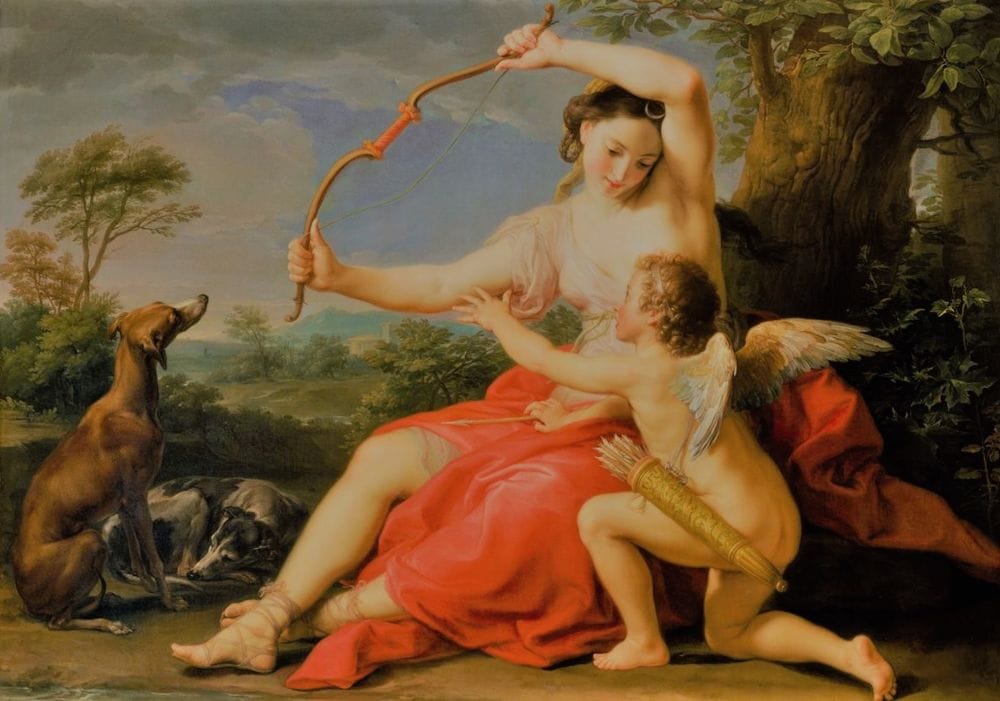Cupid’s Greek Origin: Eros, More Than Just a Cherub
We all know Cupid, the Roman god often depicted as a chubby, winged baby shooting love arrows. But did you know he has a Greek counterpart, Eros, who embodies a far more complex and ancient understanding of love and desire?
Eros’s origins are shrouded in mystery. Some myths suggest that he emerged from the primordial chaos at the universe’s birth, representing the fundamental force of attraction that likely brought order from disorder. Others claim he was the son of Aphrodite, the goddess of beauty. However, the identity of his father remains uncertain, with Zeus, Ares, and Hermes all presented as possibilities.
Eros: Wielding the Power of Love and Desire
Unlike Cupid, often portrayed as a playful prankster, Eros held immense power in Greek mythology. His golden arrows, unlike Cupid’s, weren’t merely about sparking romantic feelings; they ignited an all-consuming passion and desire in both gods and mortals. Imagine being struck by an arrow that could make you fall madly in love with life itself!
With his powerful wings, Eros could travel between the heavens and the earthly realm, spreading love, desire, and, perhaps, a touch of chaos wherever he went. His influence extended beyond just romantic love, encompassing procreation, creation, and even the cosmos itself. His connection to beauty is undeniable, reflecting the idea that love and beauty are often intertwined.
Eros vs. Cupid: Exploring Cultural Interpretations
While both Eros and Cupid represent love and desire, their portrayals and myths highlight the differing cultural perspectives of the Greeks and Romans.
Eros: Embracing Complexity
Eros embodies a more primal and multifaceted understanding of love. He’s not just about romantic love; he’s the driving force behind creation, the yearning for connection, and the passionate pursuit of beauty in all its forms.
Greek myths often depict Eros as a handsome, winged youth, representing the allure and intensity of desire. However, his arrows could also lead to heartbreak and tragedy, reflecting the potential for both joy and pain inherent in love.
Cupid: A Roman Reimagination
The Romans, in adopting Eros and renaming him Cupid, softened his image and focused more on his association with romantic love. Cupid is often portrayed as a playful, even mischievous, child, more akin to a cherub than a powerful deity.
Artistic representations further highlight this distinction. While Greek art often depicts Eros as a seductive young man, Roman art frequently portrays Cupid as a chubby, winged infant. This shift might suggest a change in how love was perceived—from a powerful, all-consuming force to a more lighthearted, romantic ideal.
Eros’s Enduring Legacy: Shaping Language and Art
Even today, Eros’s influence is evident in our language and art. The word “erotic,” derived from his name, speaks to his enduring impact on how we understand passionate love and desire. Throughout history, artists and writers have drawn inspiration from Eros, using his image and myths to explore the complexities of love, longing, and the human condition.
While Cupid might be the face of Valentine’s Day, it’s essential to remember that Eros is the original embodiment of love and desire. He reminds us that love, in all its forms, is a powerful force capable of shaping our lives, inspiring great art, and driving us to pursue connection and meaning.
- If you’re interested in learning more about the Iceni tribe and their famous leader, Boadicea, be sure to check out iceni boadicea.
- We have compiled a collection of pictures of the Great Pyramid of Khufu for your viewing pleasure.
- Discover Northern Pakistan’s Hidden Gems: Your Ultimate Guide - March 27, 2025
- Explore Eastern Canada: Unforgettable Adventures Await - March 27, 2025
- Unlock New St. John’s Potential: Education & Faith - March 27, 2025
















